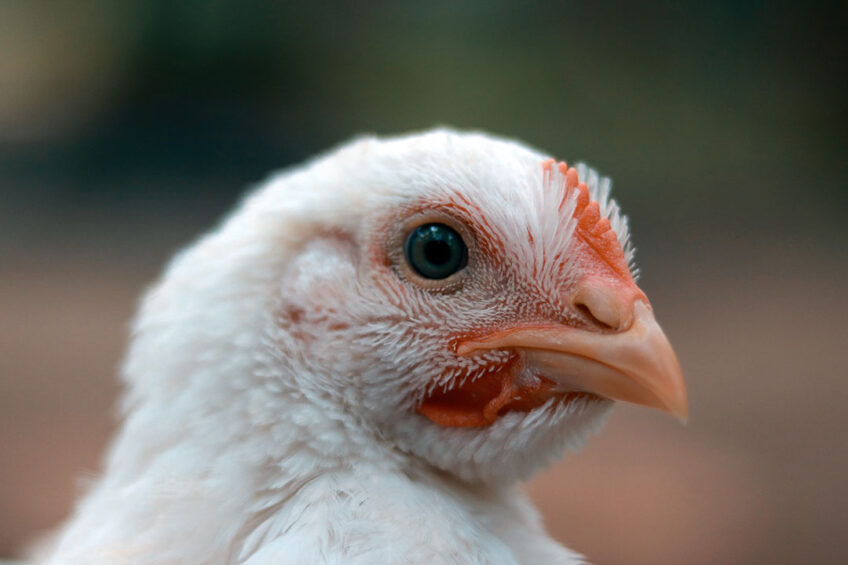Poultry production increase expected in Argentina

Poultry meat production in Argentina has risen to meet domestic demand, and with a government announcement of US$?20 million in subsidised loans for the sector, improvements in productivity are expected.
Production of poultry meat in Argentina has risen to meet domestic demand, which continued to grow during the recession years (2018-2020) in response to rising beef prices. In 2022, chicken meat production is forecast at 2.3 million metric tonnes (mmt), up only slightly from 2021 estimates of 2.290 mmt (a 3.3% increase from 2020).
In Argentina, upwards of 80% of chicken meat production is processed in 54 federally-inspected plants. The remaining production is produced at 40 additional plants that are monitored and restricted by provincial authorities for domestic sale only. Commercial broilers are slaughtered at 49-51 days at a carcass weight 2.2 to 2.4 kg. About 950 million birds are slaughtered annually. Existing slaughter capacity should allow for increased production of up to 2.45 mmt.
Substantial subsidies for poultry sector
In July 2021, the Argentine government announced ARS$ 2 billion (US$ 20 million) in subsidised loans for the Argentine poultry sector to improve productivity. Interest rates for these loans run at 22-24%, far below the annual rate of inflation which the central bank of Argentina officially estimates at 51.8%. It is expected that those poultry producers who take advantage of these loans will use them to replace aging barns with new, modernised poultry barns.
Argentina: discounts offered on loans to poultry sector
The Argentinian government announced a 30% discount on public financing for poultry and pig projects to increase national meat production for internal and foreign markets and to reap the economic and social benefits thereof. Read more…
Just 10% of Argentine chickens are currently produced in barns that utilise a full complement of modern chicken rearing technology. If these loans are properly administered and made available as intended, that percentage could rise to as high as 50% by the end of 2024. The impact of the programme could begin to be felt in mid-2022 and early 2023. Outside of this new government loan programme, productivity growth remains restrict.
Beef preferred over chicken
Domestic consumption of chicken in 2022 is forecast down 1% to 2.13 mmt as flat growth in production combined with simpler shipping logistics will enable exporters to ship more chicken meat overseas and an improving economy will allow Argentines to consume more of their traditionally preferred protein, beef, at the expense of chicken.
Pressure grows on Brazil to scrap deforestation bill
Leading European poultry firms threaten to boycott Brazilian agricultural commodities if Brazil’s Congress passes a bill leading to more deforestation. Read more…
Poultry meat consumption in 2021 is estimated at 2.15 mmt, up 4% from 2020. As the Argentine economy has begun to recover from a decline of nearly 10% in 2020, chicken prices have risen more slowly than beef. Higher production and lower exports have helped keep chicken prices low, encouraging consumption growth. Argentina’s Ministry of Agriculture, Livestock and Fisheries estimates that the annual per capita protein intake in Argentina in 2020 was 50.2 kg of beef, 45.9 kg of poultry, and 15.6 kg of pork.
Whole broilers dominate
Whole broilers represent 70% of domestic chicken meat consumption. Further processed value-added products (e.g. pre-cooked meals, frozen chicken meals, chicken nuggets and chicken burgers) represent growth opportunities.
Export taxes on feed an advantage
The Argentine poultry industry has higher costs than some of its competitors, however, export taxes on feed ingredients provide an advantage to the industry. Exports of soybeans are taxed at 33% and soybean meal at 31%, while corn, wheat, and barley face export taxes of 12%, with the potential to rise to 15%. Chicken meat faces export tax of 9%.
Brazil dominates import market
2022 Argentine chicken meat imports are forecast at 10,000 mt, on par with expected 2021 levels. Since 2001, imports have represented less than 1% of the total supply of Argentine poultry meat. Brazilian, Uruguayan, and Paraguayan chicken meat (fresh, chilled, or frozen whole birds, cuts, and offals) and prepared poultry products (preserved, seasoned, and pre-cooked products) enter Argentina tariff-free as a Mercosur pact member while other exporters face external Mercosur tariffs of 10% and 16%, respectively. Brazil continues to dominate the small Argentine import market, while Uruguay sends small volumes.
Opportunity for higher exports
Argentine exports of chicken meat in 2022 are projected to increase 20% to 180,000 mt. Poultry producers anticipate an opportunity to export a higher percentage of production due to improved international shipping logistics, particularly increased availability of refrigerated shipping containers.
The Argentine poultry industry is primarily focused on the domestic market and is much less dependent on exports than many other agricultural sectors in the country. Of current markets, China remains the top target for Argentine chicken meat exporters. Over the last 3 years, exports have averaged 65% chicken cuts, 35% whole bird, and 2021 chicken meat exports are projected to drop 5% in comparison to 2020, falling to 150,000 mt.
The information in this article has been extracted from a USDA GAINS report.













